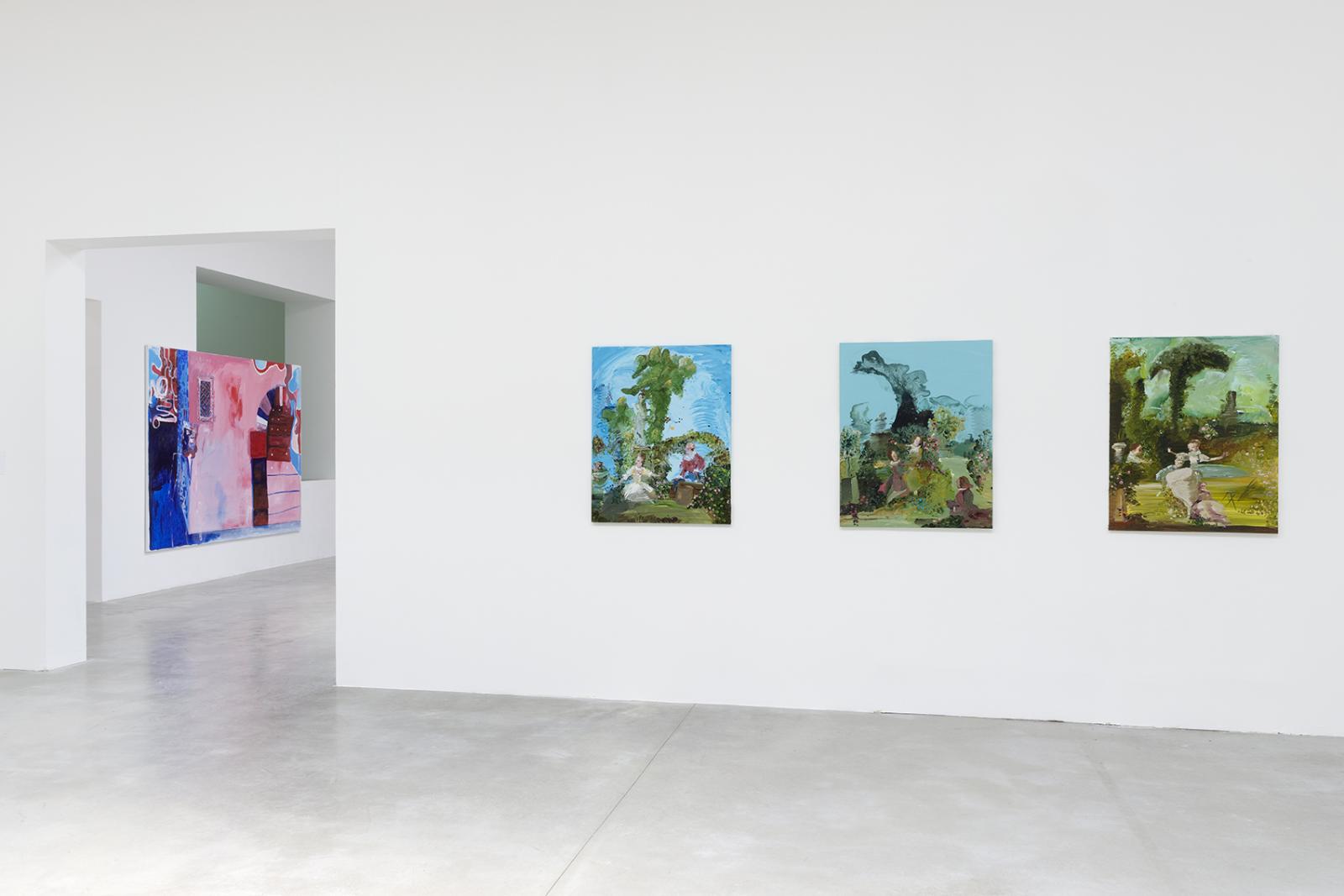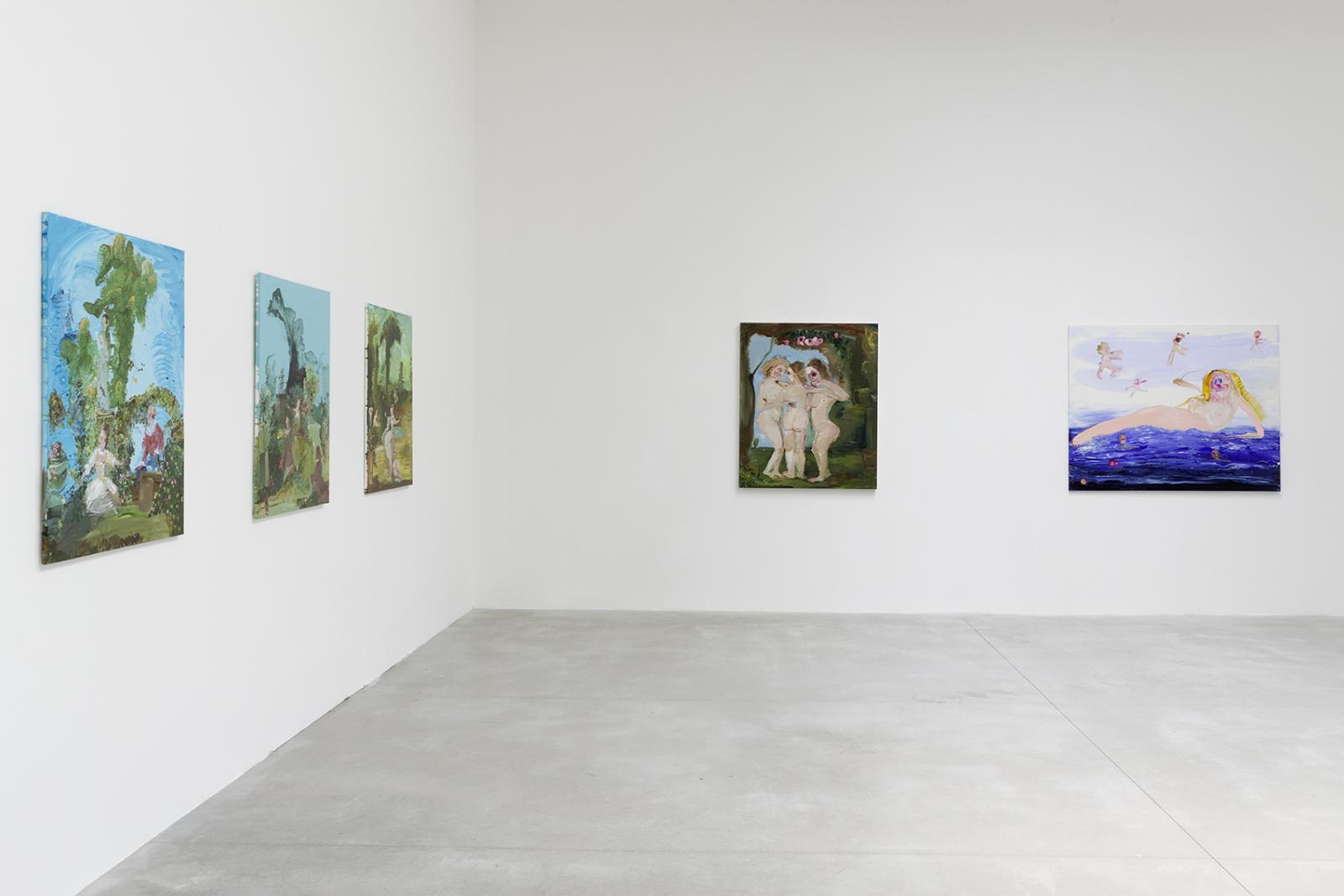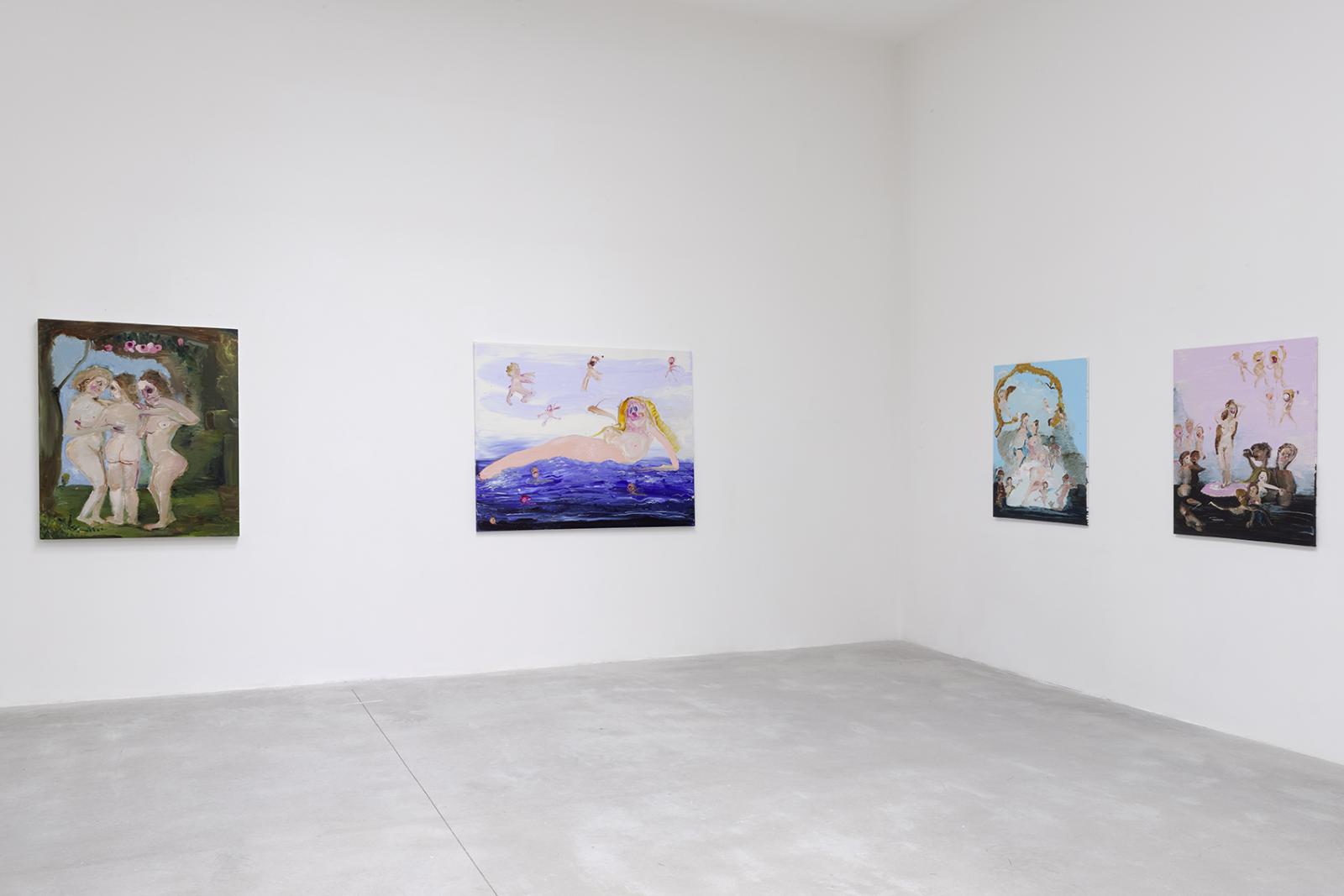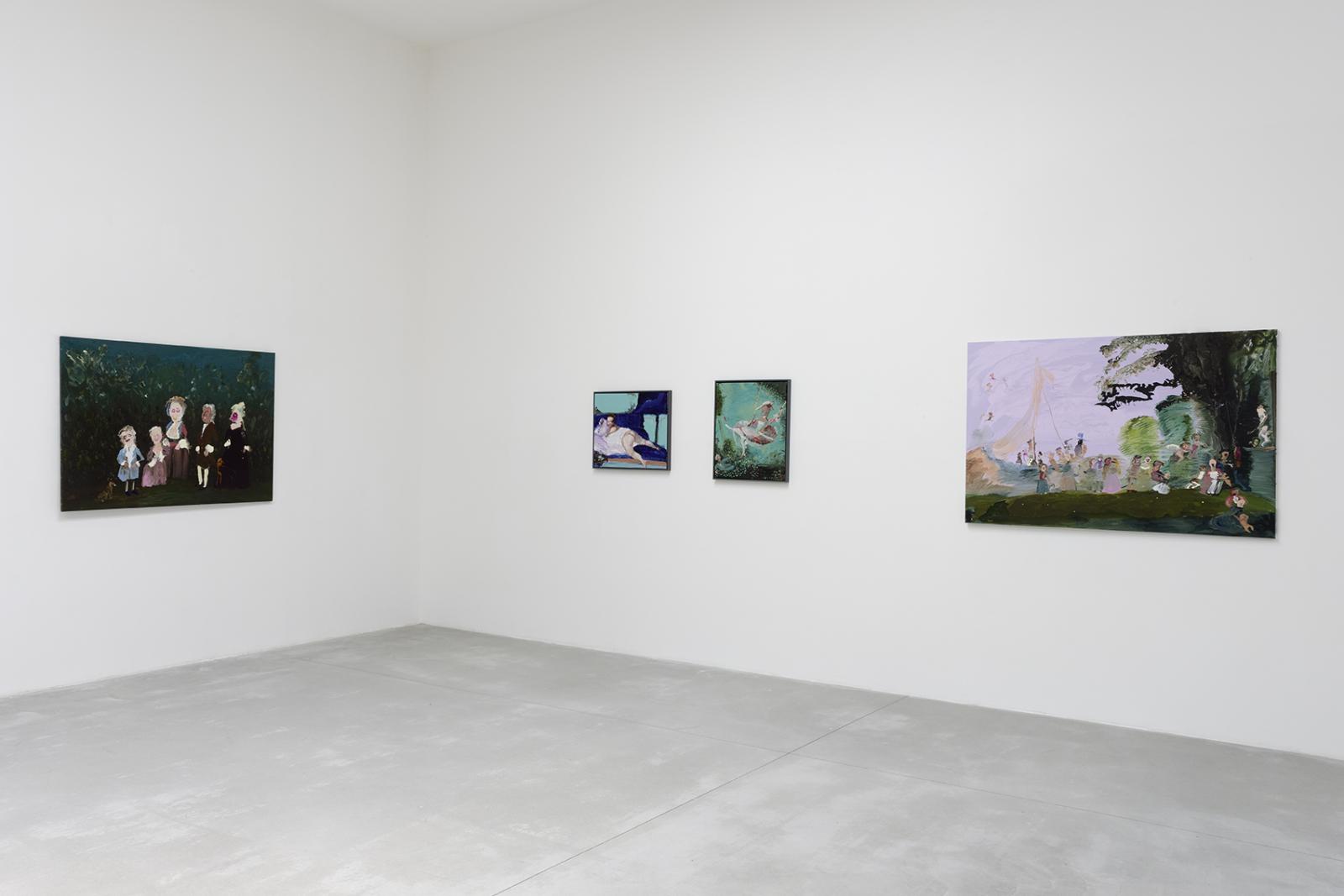Genieve Figgis
L'Almanach 18 : Genieve Figgis
Genieve Figgis’s exhibition for L’Almanach 18 comprises fifteen “nasty entertaining pieces of work” (to quote Roberta Smith in The New York Times). This group of oils on canvas and tempera on wood, never presented before, pursues her exploration of the history of painting in general and of “conversation painting” in particular – a genre that met with relative success in the eighteenth century, with its group portraits portraying members of a single family or sets of friends, captured in diverse and sometimes anecdotal activities: meals, outings in the country, recitals – executed in modest formats. Among other subjects, Figgis offers her own versions of classical paintings by Watteau (The Embarkation for Cythera, 1717) or Fragonard (The Swing, 1769), inflicting on these masterpieces the affronts of personal technique. This concerns a complex alchemy which often leads the pictorial matter to give the impression that it has flowed then melted, like candle wax. The forms dissolve amongst each other, blurring the contours of bodies or décors with the same assurance as a deforming mirror in a fun house. From this the scenes gain an astonishing “unreality,” imposing themselves like probable mirages in a desert beneath the blazing sun. Are these ridiculous distortions, or the kind of stupor betrayed by their summarily executed eyes, the reason why we become immediately, emotionally, attached to the figures in Figgis’s paintings? They are both represented and disfigured, like those in James Ensor’s work.
“Art history, architecture, and music stand as documents of previous worlds,” Geniève Figgis says, thereby probably summarizing the relationship of young generations with the history of art. Her interpretation of Watteau’s painting, created for the exhibition, stands alongside her reinterpretations of The Birth of Venus (1486) by Botticelli and The Three Graces (1653) by Rubens.
It is an understatement to say that her oeuvre questions, in a very direct way, notions of taste and heritage; in a more oblique manner, the highlighting of fêtes galantes and libertinism is not that far removed for the critical function attributed to contemporary works.
— Eric Troncy





